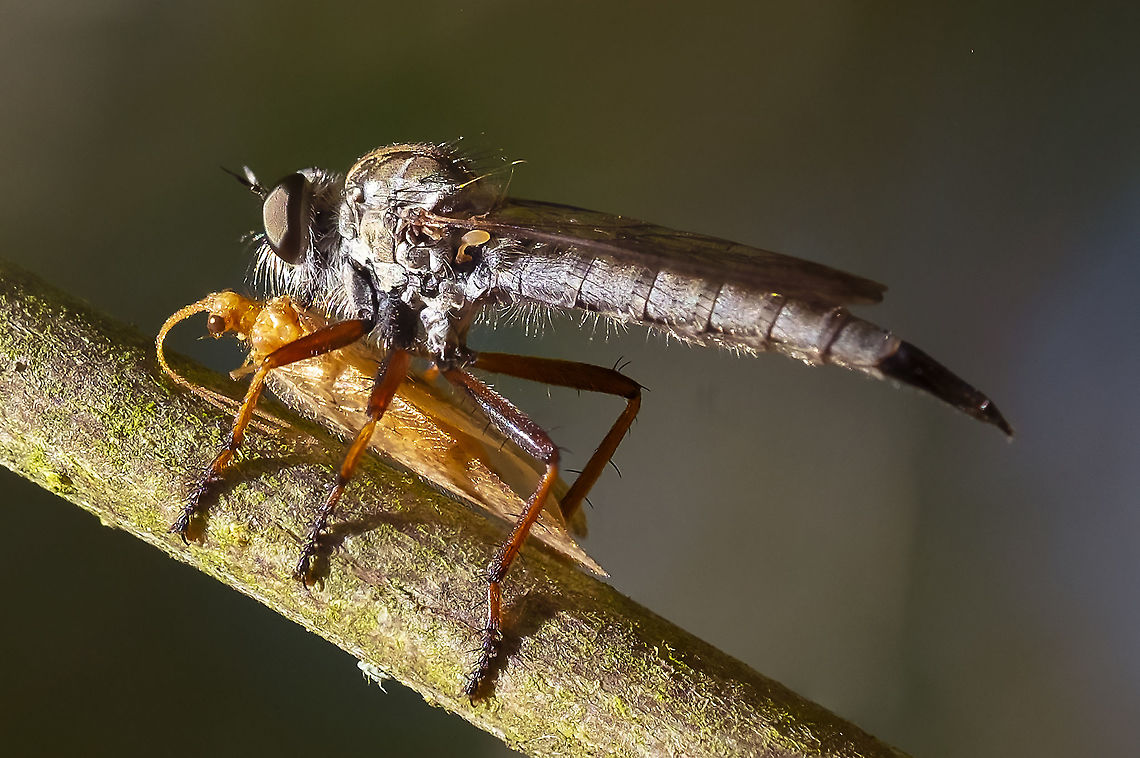No species identified
The species on this photo is not identified yet. When signed in, you can identify species on photos that you uploaded. If you have earned the social image editing capability, you can also identify species on photos uploaded by others.
By morpheme
All rights reserved
Uploaded Sep 3, 2021. Captured Sep 2, 2021 15:39 in Waughop Lake Loop, Lakewood, WA 98498, USA.


comments (10)
https://inaturalist-open-data.s3.amazonaws.com/photos/90353414/original.jpg?1597619105
If you look closely, you can see how only the thigh of the front leg lacks the thick black bristle hairs. All other legs and leg sections do have them. This is not true for all species, so can be something to narrow down the list.
Another are the hairs on the thorax, in particular where they begin. In some species, hairs already begin near the "neck", whilst in a species like yours the hairs only start halfway the thorax.
There's also beard length and color, the abdomen shape and curve, and of course genitalia.
So uhm yeah, good luck :) Posted 4 years ago
http://www.geller-grimm.de/key.htm Most of what is on BugGuide appears to be based on this guy's research. Posted 4 years ago, modified 4 years ago
Have a look at this one:
http://waarneming.nl/download/fotogidsAsilidae.pdf
I know, also in dutch. But it may have some general use for future cases:
- Clear photos to find the correct subfamily
- Page 13-16 shows keys in a very visual way, then you at least know what to look for
Applying the keys is hard and species in your area are not in the guide, but I keep coming back to this one as a starting point. Posted 4 years ago
This photo https://bugguide.net/node/view/144668/bgimage and the distribution, confirmed to be in this area, makes me think you are right about Neomochtherus
update - BugGuide has placed it in Neomochtherus. There's only 7 of 13 (10 western) species listed there at the moment. Posted 4 years ago, modified 4 years ago